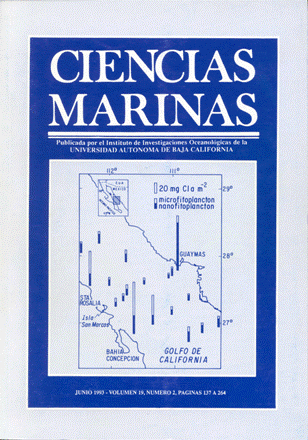δ 13C of zooplankton, decapod crustaceans and amphipods from Laguna de Terminos, Campeche (Mexico), with reference to food sources and trophic position
Main Article Content
Abstract
Zooplankton, Penaeus setiferus, P. duorarum, Xiphopenaeus kroyeti, Callinectes sapidus, Dyspanopeus texanus, Palaemonetes spp., Hippolyte spp. and amphipods were isotopically characterized to identify the food sources they use and their relative trophic position, as well as to establish a relationship between the isotopic data and the isotopic “memory”, the isotopic convergence and the complexity of trophic chains. The δ 13C values of the animals were compared to those of the submerged vegetation, detritus and sediment of each locality. The range of δ 13C values of –7.2 to –24‰ indicates that consumers take advantage of sources of organic carbon of a diverse isotopic nature. The isotopic difference between the lager consumers, P. setiferus, P. duorarum, X. kroyeri, C. sapidus and D. texanus, and the primary producers indicates that the first occupy a high trophic level within their communities. There is a relationship between the migration of P. setiferus juveniles from the northeast (CTL = 11.5 mm) to the southwest (CTL = 22.5 mm) of the lagoon, and the variation in isotopic composition from heavier (–8.9‰) to lighter (–24.2‰) δ 13C values. Three cases are presented to explain the variety of δ 13C values of P. setiferus. In general, the isotopic composition of the above-mentioned species characterized two isotopically different areas: one to the northeast of the system with heavier values of –6.4 to –17.2‰ and another to the west, southwest and South with lighter values of –15.3 to –24.2‰.
Downloads
Article Details
This is an open access article distributed under a Creative Commons Attribution 4.0 License, which allows you to share and adapt the work, as long as you give appropriate credit to the original author(s) and the source, provide a link to the Creative Commons license, and indicate if changes were made. Figures, tables and other elements in the article are included in the article’s CC BY 4.0 license, unless otherwise indicated. The journal title is protected by copyrights and not subject to this license. Full license deed can be viewed here.

